
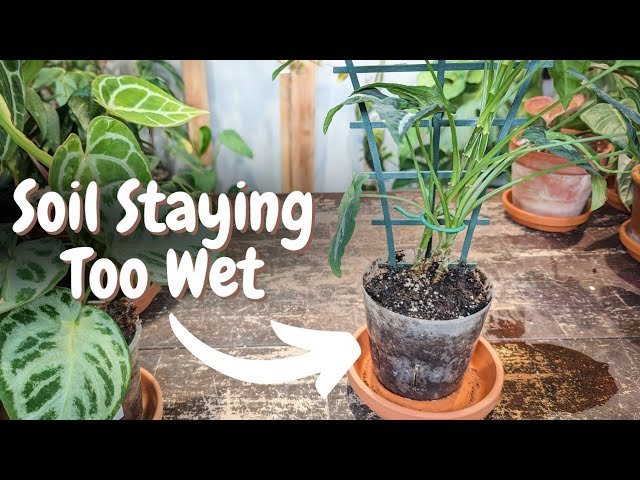
Simple Steps: How To Dry Out Soil For Improved Plant Growth
To dry out soil effectively, a strategic approach is crucial. Excess moisture can hinder plant growth and lead to root rot. A balance is key – not too dry nor too wet. Start by improving drainage, using organic matter to promote aeration. Consider the season and local climate for optimal results. Patience and consistency are crucial in the process of drying out soil. By following these steps, you can achieve the right balance for healthy plant growth.
How to Dry Out Soil: A Complete Guide
Welcome, fellow gardeners and plant enthusiasts! Have you ever faced the challenge of dealing with waterlogged or soggy soil in your garden or pots? Fear not, for in this comprehensive guide, we will explore various effective methods on how to dry out soil and restore the perfect balance for your beloved plants.
The Importance of Well-Drained Soil
Before we delve into the ways to dry out soil, let’s understand why well-drained soil is crucial for the health and growth of plants. Soil that is constantly saturated with water can lead to root rot, oxygen deprivation, and a host of other issues that can harm your plants. Adequate drainage is essential to prevent water from pooling around the roots and causing damage.
Signs of Waterlogged Soil
Identifying waterlogged soil is the first step in rectifying the issue. Common signs include stagnant water on the surface, a foul smell, wilting plants, yellowing leaves, and slow growth. Observing these signs promptly can help you take timely action to save your plants.
Methods to Dry Out Soil
1. Adjusting Watering Practices
One of the simplest ways to dry out soil is by adjusting your watering practices. Overwatering is a common cause of waterlogged soil. Ensure you water your plants only when needed, allowing the top few inches of soil to dry out between waterings. This will help maintain the right moisture level in the soil.
2. Improving Drainage
If your soil tends to retain water, consider improving the drainage in your garden or pots. Adding organic matter such as compost, perlite, or sand can help loosen compacted soil and enhance drainage. You can also create raised beds or use pots with drainage holes to facilitate water flow.
3. Using Mulch
Mulching is a great way to regulate soil moisture and prevent waterlogging. Organic mulches like bark chips or straw can help absorb excess water and reduce evaporation, maintaining a balanced level of moisture in the soil. Apply a layer of mulch around your plants to protect them from waterlogging.
4. Aerating the Soil
Aerating the soil can promote better drainage and prevent waterlogging. Using a garden fork, gently loosen the soil to allow air, water, and nutrients to penetrate deeper. Aeration also helps break up compacted soil, improving root growth and overall plant health.
5. Using Soil Amendments
Soil amendments such as gypsum or agricultural lime can help improve soil structure and drainage. These amendments work by breaking up clay particles and improving water infiltration. Incorporate them into the soil according to package instructions to enhance drainage and prevent waterlogging.
6. Installing a French Drain
If waterlogging is a persistent issue in your garden, consider installing a French drain. A French drain is a trench filled with gravel or rock that redirects excess water away from the soil. This can be an effective long-term solution for areas prone to waterlogging.
7. Using a Wet-Dry Vacuum
In cases of severe waterlogging, you can use a wet-dry vacuum to remove excess water from the soil. Be sure to use the vacuum on the lowest setting to avoid damaging the roots. This method can quickly eliminate standing water and prevent further damage to your plants.
By following these practical methods on how to dry out soil, you can ensure a healthy and thriving environment for your plants. Remember to monitor the moisture levels regularly and make adjustments as needed to prevent waterlogging. With a little care and attention, you can enjoy a lush and vibrant garden free from the woes of waterlogged soil. Happy gardening!
Thank you for reading our guide on how to dry out soil. We hope you found it informative and helpful in your gardening endeavors. Stay tuned for more tips and tricks on plant care and soil management. Remember, a little love and care can go a long way in nurturing your green friends!
How to dry out Wet grounds
Frequently Asked Questions
How can I dry out soil effectively after heavy rainfall?
To dry out soil after heavy rainfall, first, ensure good drainage in the area by adding organic matter like compost to improve soil structure. Additionally, you can use aeration tools to promote air circulation within the soil and speed up the drying process. Avoid overwatering during this time and consider using a tarp to cover the soil to prevent further saturation.
What are some techniques to dry out soil in a garden bed or container?
If you need to dry out soil in a garden bed or container, you can gently loosen the top layer of soil with a fork to improve aeration. Placing the container in a sunny spot can help evaporate excess moisture. Using fans or dehumidifiers near the soil can also aid in drying it out more quickly. Be mindful not to compact the soil further during this process.
Can excessive watering lead to waterlogged soil, and how can I dry it out?
Yes, excessive watering can lead to waterlogged soil, which deprives plant roots of oxygen and can cause wilting or root rot. To dry out waterlogged soil, you can create drainage channels, mix in sand or perlite for better drainage, and avoid watering until the soil has dried out to the desired level. Elevating containers and adjusting watering practices can prevent future waterlogging issues.
Final Thoughts
In conclusion, effectively drying out soil involves proper drainage, sunlight exposure, and aeration. Avoid overwatering and consider using organic matter to improve soil structure. Remember to test the soil moisture levels regularly to prevent issues with waterlogging. Following these steps will help you successfully dry out soil and create a healthy environment for your plants to thrive.

Exploring How Long Stinger Detox Lasts In Your System
Stinger detox typically lasts in your system for up to 2 hours. Once you’ve taken it, you might wonder how long does stinger detox last in your system. The timeframe can vary depending on factors like your metabolism and the amount ingested. Understanding the duration of stinger detox effects is crucial for successful toxin elimination. It’s essential to know when it’s most effective to achieve optimal results.
How Long Does Stinger Detox Last in Your System
Welcome, everyone! Today, we are going to delve into the world of detox products, focusing on Stinger Detox and how long it lasts in your system. If you’ve ever wondered about detoxing, how it works, and how long the effects last, you’ve come to the right place! Let’s explore together and find out all you need to know about Stinger Detox.
Understanding Stinger Detox
Before we talk about how long Stinger Detox lasts in your system, it’s important to understand what it is. Stinger Detox is a popular brand of detox products designed to help rid your body of toxins. These toxins can come from various sources such as food, drinks, medications, or even environmental factors. Stinger Detox products aim to cleanse your body and support your overall health and wellness.
How Does Stinger Detox Work?
Stinger Detox works by containing a blend of natural ingredients that are believed to help eliminate toxins from your body. These ingredients may include herbs, vitamins, and minerals that support your body’s natural detoxification processes. When you consume a Stinger Detox product, it can help boost your body’s ability to flush out toxins through processes like urination and sweating.
Factors That Affect How Long Stinger Detox Lasts
Now, let’s get to the main question – how long does Stinger Detox last in your system? The duration for which Stinger Detox remains effective can vary from person to person based on several factors:
1. Metabolism
Your metabolism plays a significant role in how fast your body processes and eliminates toxins. People with a faster metabolism may experience the effects of Stinger Detox for a shorter period compared to those with a slower metabolism.
2. Body Weight
Body weight can also impact how long Stinger Detox lasts in your system. Generally, individuals with a higher body weight may require larger doses of detox products to achieve the desired results, which can affect the duration of effectiveness.
3. Frequency of Use
If you regularly use Stinger Detox or other detox products, your body may build up a tolerance to them over time. This can influence how long the detox effects last and may require adjustments to your detox routine.
4. Hydration Levels
Staying hydrated is crucial for the effectiveness of detox products like Stinger Detox. Proper hydration can help your body eliminate toxins more efficiently, potentially extending the duration of detox effects.
How Long Can You Expect Stinger Detox to Last?
While individual experiences may vary, most people can expect the effects of Stinger Detox to last for a few hours to a couple of days. The key is to follow the recommended usage instructions provided with the product to maximize its effectiveness.
So, there you have it – a comprehensive guide on how long Stinger Detox lasts in your system. Remember, everyone’s body is unique, so it’s essential to listen to your body and adjust your detox routine accordingly. If you’re considering using Stinger Detox or any other detox product, consult with a healthcare professional to ensure it aligns with your health goals.
We hope this article has shed light on the topic of detox products and their effects. Stay informed, stay healthy, and remember that your well-being always comes first!
Thank you for joining us on this exploration of Stinger Detox – until next time!
Gotta Pass a Drug Test | Stinger Detox 5x Review
Frequently Asked Questions
How long does Stinger Detox stay in your system after consumption?
Stinger Detox can typically be detected in your system for up to 1-3 hours after consumption, depending on various factors such as your metabolism, body weight, and frequency of use.
Is it possible to extend the time Stinger Detox remains detectable in the body?
While there is no sure way to prolong the presence of Stinger Detox in your system artificially, staying hydrated and maintaining a healthy lifestyle may help slightly slow down the detoxification process.
Can certain medications or medical conditions affect how long Stinger Detox is detectable?
Yes, some medications and medical conditions can potentially impact the metabolism of Stinger Detox in your system, leading to variations in detection times. It is advisable to consult with a healthcare professional for personalized advice in such situations.
Final Thoughts
In conclusion, Stinger Detox typically lasts for up to 2-3 hours in your system. Its effectiveness may vary based on individual factors such as metabolism and frequency of toxin exposure. To maximize results, follow the recommended usage guidelines as instructed. Remember to consult with a healthcare professional before using any detox products. It’s important to understand how long does Stinger Detox last in your system to plan accordingly for any upcoming drug tests.
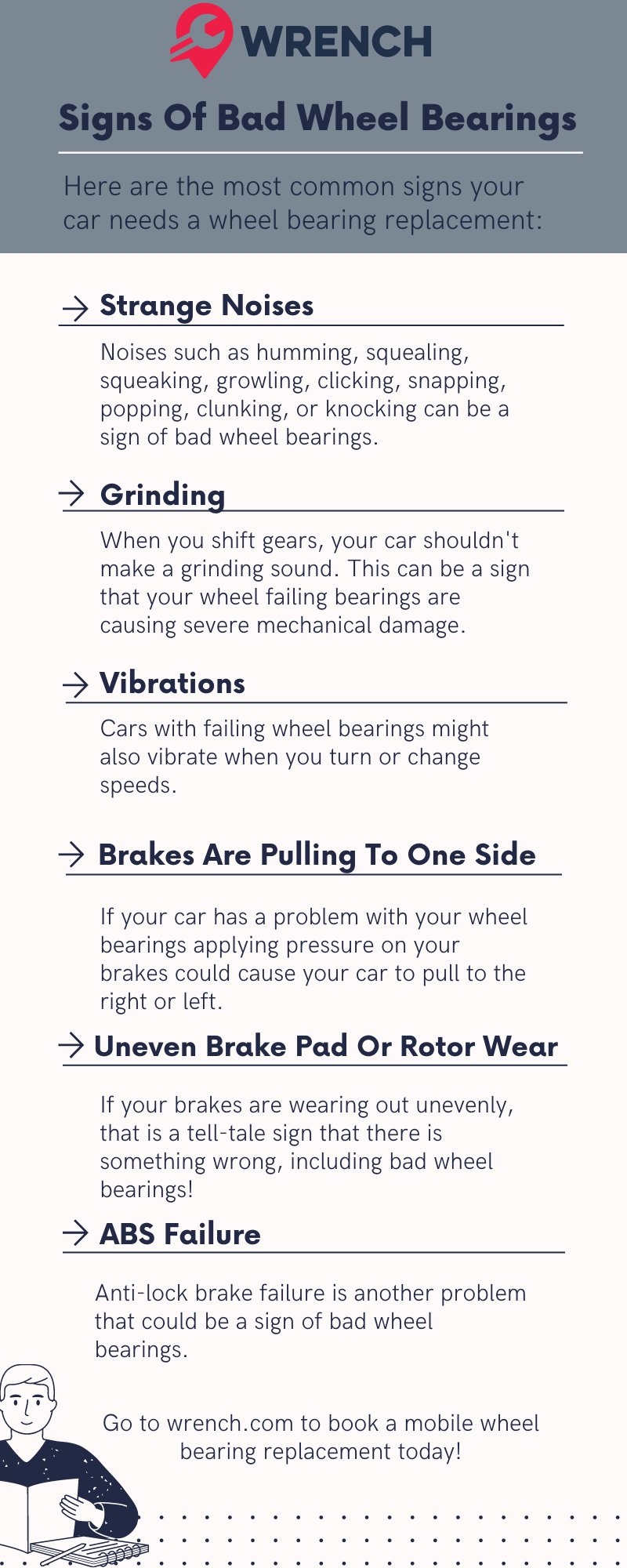
Tips For Identifying A Bad Wheel Bearing: How To Know If You Have A Bad Wheel Bearing
If you hear a constant humming or growling noise coming from your wheels while driving, it could be a sign of a bad wheel bearing. These crucial components support the weight of the vehicle and ensure smooth rotation. Pay attention to any unusual vibrations or steering issues, as they might indicate a failing wheel bearing. In this article, we will explore how to know if you have a bad wheel bearing and the steps to take for a timely diagnosis and repair.
How to Know If You Have a Bad Wheel Bearing
Do you ever hear strange noises coming from your car while driving? Or do you feel an unusual vibration when you’re on the road? These could be signs that you have a bad wheel bearing. Your wheel bearings play a crucial role in the smooth operation of your vehicle, so it’s important to know when they need attention. In this article, we will explore the various signs that indicate a bad wheel bearing and what you can do about it.
What Is a Wheel Bearing?
Before we dive into how to identify a bad wheel bearing, let’s first understand what a wheel bearing is. A wheel bearing is a set of steel balls enclosed by a metal ring. Its main function is to enable the wheel to spin freely with minimal friction. Wheel bearings are found in each wheel hub assembly of a vehicle and are crucial for the overall performance and safety of the car.
Signs of a Bad Wheel Bearing
There are several telltale signs that can indicate a problem with your wheel bearing. Here are some common symptoms to look out for:
1. Unusual Noises
If you hear a grinding, clicking, or rumbling noise coming from one of your wheels, it could be a sign of a bad wheel bearing. These noises typically get louder as you accelerate or make turns. Pay close attention to any unusual sounds, as they can indicate a serious issue with your wheel bearing.
2. Vibration in the Steering Wheel
Another sign of a bad wheel bearing is a noticeable vibration in the steering wheel while driving. This vibration may feel like a wobble or shake, especially at higher speeds. If you experience this, it’s best to have your wheel bearings checked by a professional mechanic.
3. Uneven Tire Wear
Bad wheel bearings can cause uneven tire wear, leading to bald spots or worn patches on your tires. If you notice that your tires are wearing out unevenly, it could be due to a faulty wheel bearing causing misalignment in the wheels.
4. Steering Wheel Misalignment
A bad wheel bearing can also result in steering wheel misalignment. If you find it hard to keep your car straight while driving or notice the steering wheel pulling to one side, it may indicate a problem with the wheel bearings.
5. Wheel Movement and Play
If you jack up your car and notice excessive wheel movement or play when you try to wiggle the wheel back and forth, it could be a sign of a loose or damaged wheel bearing. This can affect the stability and safety of your vehicle.
What to Do If You Suspect a Bad Wheel Bearing
If you suspect that you have a bad wheel bearing based on the signs mentioned above, it’s essential to take action promptly. Ignoring a faulty wheel bearing can lead to more significant problems and compromise the safety of your vehicle. Here are steps you can take:
1. Consult a Professional Mechanic
The first and most crucial step is to consult a professional mechanic to diagnose the issue. A qualified mechanic will have the expertise and tools to inspect your wheel bearings and determine if they need to be replaced.
2. Replace the Wheel Bearings
If your mechanic confirms that you have a bad wheel bearing, it’s important to follow their recommendation to replace the faulty part. Wheel bearing replacement is a complex process and requires specialized tools, so it’s best left to professionals.
3. Regular Maintenance
To prevent future wheel bearing issues, it’s essential to keep up with regular maintenance of your vehicle. Follow the manufacturer’s recommended service schedule and have your wheel bearings inspected during routine check-ups.
In conclusion, knowing how to identify a bad wheel bearing is crucial for maintaining the safety and performance of your vehicle. By paying attention to the signs such as unusual noises, steering wheel vibrations, uneven tire wear, steering misalignment, and wheel movement, you can address wheel bearing issues promptly and avoid potential hazards on the road. Remember to consult a professional mechanic for accurate diagnosis and timely repairs to keep your car running smoothly.
Stay vigilant, listen to your car, and take action when needed to ensure your wheel bearings are in good condition and your journeys are safe and enjoyable!
How to 100% diagnose a bad wheel bearing.
Frequently Asked Questions
How can I tell if my car has a bad wheel bearing?
To determine if you have a bad wheel bearing, you may notice a few common signs. One of the most typical signs is a loud, constant noise coming from the affected wheel that increases with vehicle speed. You may also feel vibrations or wobbling in the steering wheel or vehicle as you drive. Another indicator is uneven tire wear, which can result from the wheel bearing not allowing the wheel to sit properly.
Why is it important to address a bad wheel bearing promptly?
It is crucial to address a bad wheel bearing promptly because ignoring the issue can lead to serious safety concerns and further damage to your vehicle. A failed wheel bearing can affect your ability to control the car, potentially resulting in accidents. Additionally, a bad wheel bearing can cause damage to other components of the wheel assembly, leading to more extensive and costly repairs.
Can a bad wheel bearing cause a steering wheel to feel loose?
Yes, a bad wheel bearing can cause the steering wheel to feel loose or wobbly while driving. When a wheel bearing is worn out or damaged, it can create excess play in the wheel, causing the steering to feel less responsive and shaky. If you notice your steering wheel feeling loose, it is essential to have your wheel bearings inspected by a professional mechanic.
Final Thoughts
Feeling vibrations, hearing unusual noises, and experiencing steering wheel looseness are signs that you may have a bad wheel bearing. Don’t ignore these warning signals – addressing the issue promptly can prevent further damage and ensure your safety on the road. Regular maintenance checks and listening to your vehicle can help you quickly identify if you have a bad wheel bearing. Remember, recognizing the signs of a bad wheel bearing early on can save you from costly repairs down the road.
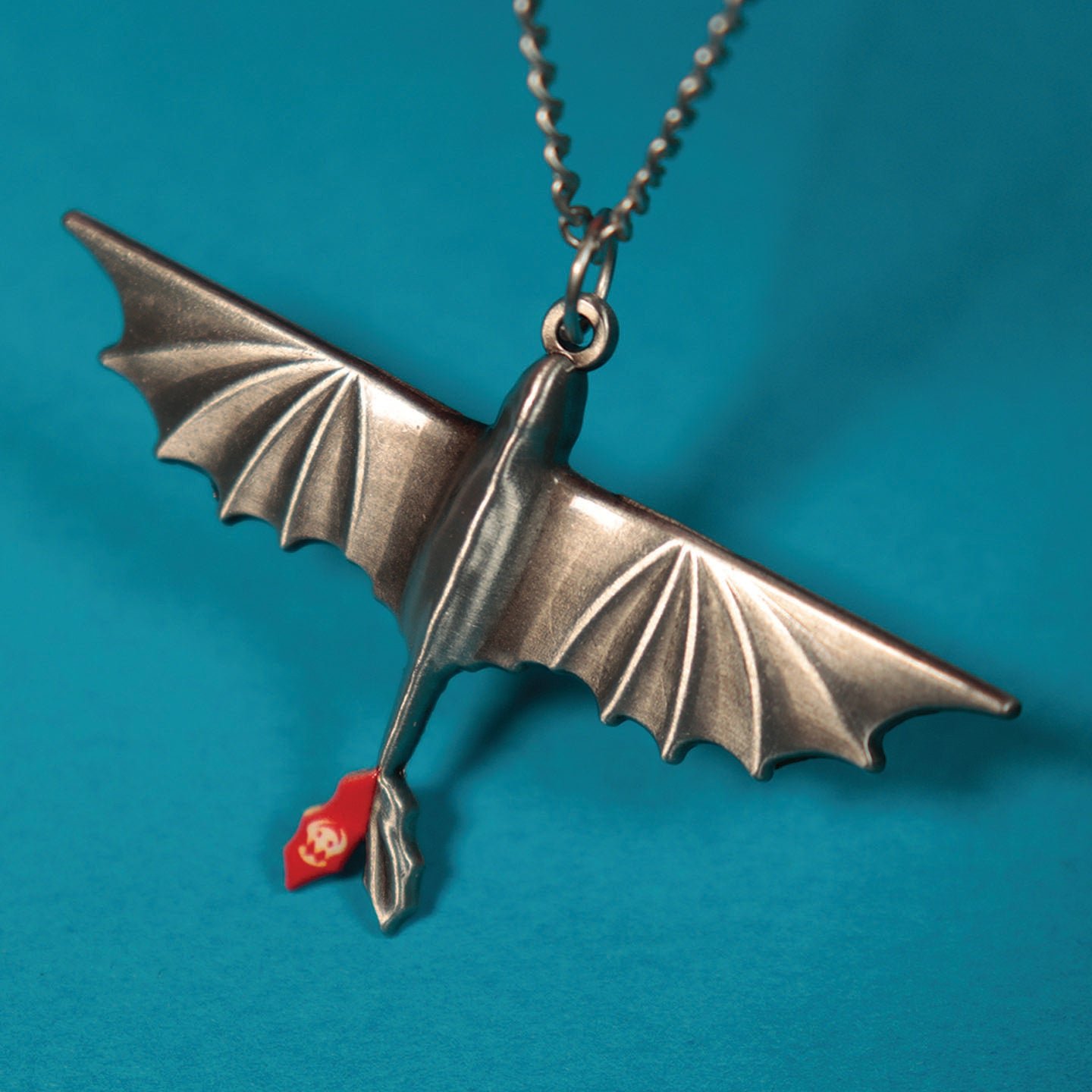
Master The Art Of How To Train Your Dragon Jewelry
Looking to master the art of how to train your dragon jewelry? Dive into a world where elegance meets the mystical allure of dragons. Transform ordinary accessories into breathtaking statement pieces that capture the essence of these legendary creatures. Unleash your creativity and craft unique jewelry inspired by the vibrant colors and fierce beauty of dragons. Let’s embark on a journey where imagination knows no bounds as we explore the enchanting realm of dragon-inspired jewelry making.
Discover the Magic of How to Train Your Dragon Jewelry
Welcome, dragon enthusiasts! Are you ready to embark on a magical journey into the world of “How to Train Your Dragon” jewelry? Whether you are a fan of the beloved book series or the thrilling movies, this guide will help you uncover the wonders of dragon-themed jewelry and how you can incorporate these mythical creatures into your everyday style.
The Fascination with Dragons
Dragons have intrigued humans for centuries with their majestic presence and mystical abilities. From ancient folklore to modern pop culture, dragons have captured our imagination and inspired countless stories and legends. “How to Train Your Dragon,” created by author Cressida Cowell, has brought these fantastical creatures to life in a heartwarming tale of friendship, bravery, and adventure.
Why Wear Dragon Jewelry?
Wearing dragon jewelry is a way to show your love for these mythical beings and express your unique personality. Dragon-themed accessories can add a touch of fantasy and mystery to your look, whether you’re attending a cosplay event or just want to add a bit of whimsy to your everyday outfits. From dragon pendants to rings to earrings, there are endless ways to incorporate these magical creatures into your jewelry collection.
Types of Dragon Jewelry
When it comes to “How to Train Your Dragon” jewelry, the options are as vast as the world of dragons itself. Here are some popular types of dragon-themed jewelry that you can explore:
Dragon Pendants
Dragon pendants are a classic choice for those who want to make a bold statement with their jewelry. These intricate pieces often feature detailed dragon designs in various poses, from fierce and menacing to graceful and majestic. Dragon pendants can be worn on chains or cords and are perfect for adding a touch of fantasy to any outfit.
Dragon Rings
Dragon rings are a popular choice for both men and women who want to showcase their love for dragons in a subtle yet stylish way. These rings come in a variety of designs, from simple bands with dragon motifs to more elaborate creations with gemstone accents. Whether you prefer a sleek and modern look or a more vintage-inspired design, there is a dragon ring out there for everyone.
Dragon Earrings
For those who want to add a touch of whimsy to their jewelry collection, dragon earrings are the perfect choice. These playful accessories come in a variety of styles, from dainty studs to statement ear cuffs, all featuring charming dragon motifs. Dragon earrings are a fun way to inject some fantasy into your everyday look and make a bold fashion statement.
How to Choose the Perfect Dragon Jewelry
With so many options available, finding the perfect piece of “How to Train Your Dragon” jewelry can seem like a daunting task. Here are some tips to help you choose the right dragon accessory for you:
Consider Your Style
Before you start shopping for dragon jewelry, think about your personal style and how you can incorporate dragon-themed accessories into your wardrobe. If you prefer a more subtle look, opt for small, understated pieces like dragon stud earrings or a delicate dragon pendant. For those who want to make a statement, bold dragon rings or earrings with intricate designs are the way to go.
Choose Quality Materials
When selecting dragon jewelry, pay attention to the materials used in the piece. Look for high-quality materials like sterling silver, gold, or stainless steel, which are durable and long-lasting. If the jewelry features gemstones, make sure they are genuine and securely set to prevent them from falling out.
Embrace Your Creativity
Don’t be afraid to mix and match different pieces of dragon jewelry to create a unique and personalized look. Layer dragon pendants with other necklaces, stack dragon rings on different fingers, or pair dragon earrings with other whimsical accessories to show off your creative flair. The key is to have fun and experiment with different combinations until you find a style that speaks to you.
Caring for Your Dragon Jewelry
To ensure that your “How to Train Your Dragon” jewelry stays in top condition, it’s essential to take proper care of your pieces. Here are some tips to help you keep your dragon accessories looking their best:
Store Your Jewelry Properly
When you’re not wearing your dragon jewelry, store it in a cool, dry place away from direct sunlight and humidity. Consider keeping your pieces in a jewelry box or pouch to prevent them from getting scratched or tangled with other accessories.
Clean Your Jewelry Regularly
To maintain the luster of your dragon jewelry, clean it regularly using a soft, lint-free cloth to remove dirt, oil, and sweat residue. Avoid using harsh chemicals or abrasive materials that could damage the metal or gemstones. For intricate designs, you can also use a soft-bristled brush to gently scrub hard-to-reach areas.
Avoid Exposing Your Jewelry to Harsh Chemicals
When wearing your dragon jewelry, avoid exposing it to harsh chemicals such as perfumes, lotions, and hair products, as they can tarnish the metal and dull the gemstones. Remove your jewelry before swimming or showering to prevent damage from chlorine and saltwater.
Where to Find How to Train Your Dragon Jewelry
If you’re ready to add some dragon magic to your jewelry collection, there are plenty of places where you can find “How to Train Your Dragon” jewelry. Here are some popular options to help you get started:
Online Retailers
Online retailers like Etsy, Amazon, and Hot Topic offer a wide selection of dragon-themed jewelry inspired by “How to Train Your Dragon.” You can browse through various designs, materials, and price ranges to find the perfect piece that speaks to your dragon-loving heart.
Local Jewelry Stores
Visit your local jewelry stores or boutiques to explore their collections of dragon jewelry. Many stores carry unique and handmade pieces that you won’t find anywhere else, allowing you to support local artisans and find one-of-a-kind treasures that reflect your love for dragons.
Fan Conventions and Events
If you’re a die-hard “How to Train Your Dragon” fan, consider attending fan conventions and events dedicated to the series. These gatherings often feature vendors selling dragon-themed merchandise, including jewelry, apparel, and collectibles. You can meet fellow fans, discover new artists, and immerse yourself in the enchanting world of dragons.
Unleash Your Inner Dragon
Now that you’ve learned all about “How to Train Your Dragon” jewelry, it’s time to unleash your inner dragon and embrace the magic of these mythical creatures. Whether you’re a seasoned dragon aficionado or just dipping your toes into the world of dragon jewelry, there’s a piece out there waiting to join your collection and ignite your imagination.
So go ahead, explore, experiment, and wear your dragon jewelry with pride. Let these awe-inspiring creatures accompany you on your daily adventures and remind you of the power of friendship, courage, and the boundless possibilities of the imagination. Happy dragon hunting!
How To Train Your Dragon | Gnoce Collection 2025 Review!
Frequently Asked Questions
Q: What types of jewelry can be inspired by “How to Train Your Dragon”?
A: Jewelry inspired by “How to Train Your Dragon” can include dragon-themed necklaces, bracelets, earrings, and rings. These pieces often feature dragon scales, wings, claws, or character symbols from the movie.
Q: How can I incorporate dragon motifs into my jewelry designs?
A: You can incorporate dragon motifs into your jewelry designs by using dragon-shaped pendants, adding dragon-scale textures, or including gemstones that represent dragon colors like green for Toothless or red for Hookfang.
Q: What materials are commonly used to make “How to Train Your Dragon” jewelry?
A: Common materials used to make “How to Train Your Dragon” jewelry include sterling silver, gold, enamel, and semi-precious stones. These materials help capture the essence of the mystical world of dragons.
Final Thoughts
In conclusion, training your dragon jewelry is an exciting journey worth embarking on. By following our tips and guidance, you can ensure your jewelry remains in top condition. Remember to clean and store your dragon jewelry properly to maintain its beauty and shine. With a little care and attention, your how to train your dragon jewelry will continue to dazzle for years to come.

Exploring The Cost: How Much Is Hibachi Per Person
Hibachi per person typically ranges from $20 to $50 at most restaurants. The experience of dining at a hibachi grill is not just about the food but also the fantastic display of culinary skills right in front of you. The sizzling sounds, the artful knife techniques, and the delicious aroma all create an atmosphere that makes the price worth it. Whether you’re celebrating a special occasion or just in the mood for a memorable meal, hibachi per person is an experience that combines entertainment and delicious cuisine.
How Much is Hibachi Per Person: A Detailed Guide
Welcome, curious food enthusiasts! Today, we are diving into the delicious world of hibachi and exploring the question that many wonder about – how much does it cost per person to experience the joy of hibachi dining? Whether you are a seasoned hibachi lover or a newcomer to this culinary adventure, this guide will provide you with all the information you need to know about the costs associated with hibachi dining on a per person basis. So, let’s fire up the grill and get started!
What is Hibachi?
Before we talk about the cost, let’s first understand what hibachi is. Hibachi is a traditional Japanese style of cooking that involves grilling meat, seafood, and vegetables on a high-heat iron griddle. The term “hibachi” actually refers to the heating device itself, which is a portable charcoal or gas grill. In modern times, hibachi dining has evolved into a fun and interactive culinary experience where skilled chefs cook your food right in front of you on a large flat grill.
The Hibachi Experience
When you dine at a hibachi restaurant, you are not just enjoying a meal; you are part of a show. The hibachi chef, also known as a teppanyaki chef, entertains diners with impressive knife skills, dazzling tricks, and a playful attitude. From creating onion volcanoes to flipping shrimp tails into their hats, these chefs are masters of both cooking and showmanship.
Menu Options
Most hibachi restaurants offer a variety of menu options that typically include combinations of steak, chicken, seafood, and vegetarian dishes. Some restaurants may also have premium options like Kobe beef or lobster tail for those looking to indulge in a more luxurious dining experience. Additionally, hibachi meals are usually served with soup, salad, rice, and vegetables, providing a well-rounded dining experience.
How Much Does Hibachi Cost Per Person?
Now, let’s get to the heart of the matter – how much can you expect to pay per person when dining at a hibachi restaurant? The cost of hibachi per person can vary depending on several factors such as the location of the restaurant, the quality of ingredients used, the level of skill of the chefs, and the overall dining experience offered. On average, however, you can expect to pay around $20 to $50 per person for a standard hibachi meal.
Factors Affecting the Cost
1. Location: Hibachi restaurants in larger cities or upscale neighborhoods may have higher prices compared to those in smaller towns or more casual settings.
2. Quality of Ingredients: Restaurants that use high-quality ingredients, such as prime steak or fresh seafood, may charge more for their hibachi meals.
3. Chef’s Skill Level: Highly skilled hibachi chefs who put on elaborate performances and showcase their culinary talents may command higher prices for their services.
4. Restaurant Reputation: Popular hibachi restaurants with a strong reputation for excellent food and service may have higher prices due to the demand for their dining experience.
Tips for Saving Money
If you are looking to enjoy the hibachi experience without breaking the bank, here are a few tips to help you save money:
1. Lunch Specials
Many hibachi restaurants offer lunch specials that are more affordable than their dinner menu. By dining during lunch hours, you can enjoy a similar hibachi experience at a discounted price.
2. Early Bird Discounts
Some restaurants may offer early bird discounts for diners who visit during off-peak hours. Taking advantage of these promotions can help you save on your hibachi meal.
3. Group Discounts
If you are dining with a group of friends or family members, inquire about group discounts or special group packages that hibachi restaurants may offer. Group rates are often more budget-friendly per person.
In conclusion, the cost of hibachi per person can vary depending on various factors, but on average, you can expect to pay between $20 to $50 for a standard hibachi meal. Hibachi dining is not just about the food; it’s about the experience. The lively atmosphere, skilled chefs, and interactive cooking style make it a dining experience unlike any other. So, whether you are celebrating a special occasion or simply looking to enjoy a memorable meal, hibachi is a fantastic choice for a fun and delicious dining experience.
Now that you know how much hibachi costs per person and have some money-saving tips in your pocket, go ahead and treat yourself to a hibachi feast. Your taste buds and your inner foodie will thank you!
Hibachi 4 U: 8.4/10 & $50 per person 🇯🇵#chicagohibachi #hibachi #chicago
Frequently Asked Questions
What factors influence the cost of hibachi per person?
The cost of hibachi per person can vary depending on factors such as the location of the restaurant, the type of hibachi experience chosen, the quality of ingredients used, and any additional services offered.
Are there any all-inclusive hibachi dining options available?
Some hibachi restaurants offer all-inclusive dining options that include a set menu and a fixed price per person, which can be a convenient and cost-effective choice for those looking for a hassle-free dining experience.
Do hibachi prices typically include drinks and side dishes?
Most hibachi prices are generally for the main course and do not include drinks or additional side dishes. Customers may have the option to order drinks and extra sides separately, which could impact the overall cost per person.
Can group discounts be availed for hibachi dining?
Some hibachi restaurants offer group discounts for larger parties, which can help lower the cost per person. It’s advisable to inquire about any group deals or special offers when making a reservation for a group hibachi dining experience.
Final Thoughts
Hibachi dining experience varies in cost, typically ranging from $20 to $50 per person. Factors influencing the price include the restaurant’s location, quality of ingredients, and the chef’s expertise. When planning a hibachi meal, consider the budget and preferences of the group to ensure an enjoyable experience. Understanding how much is hibachi per person is essential for making informed dining choices.
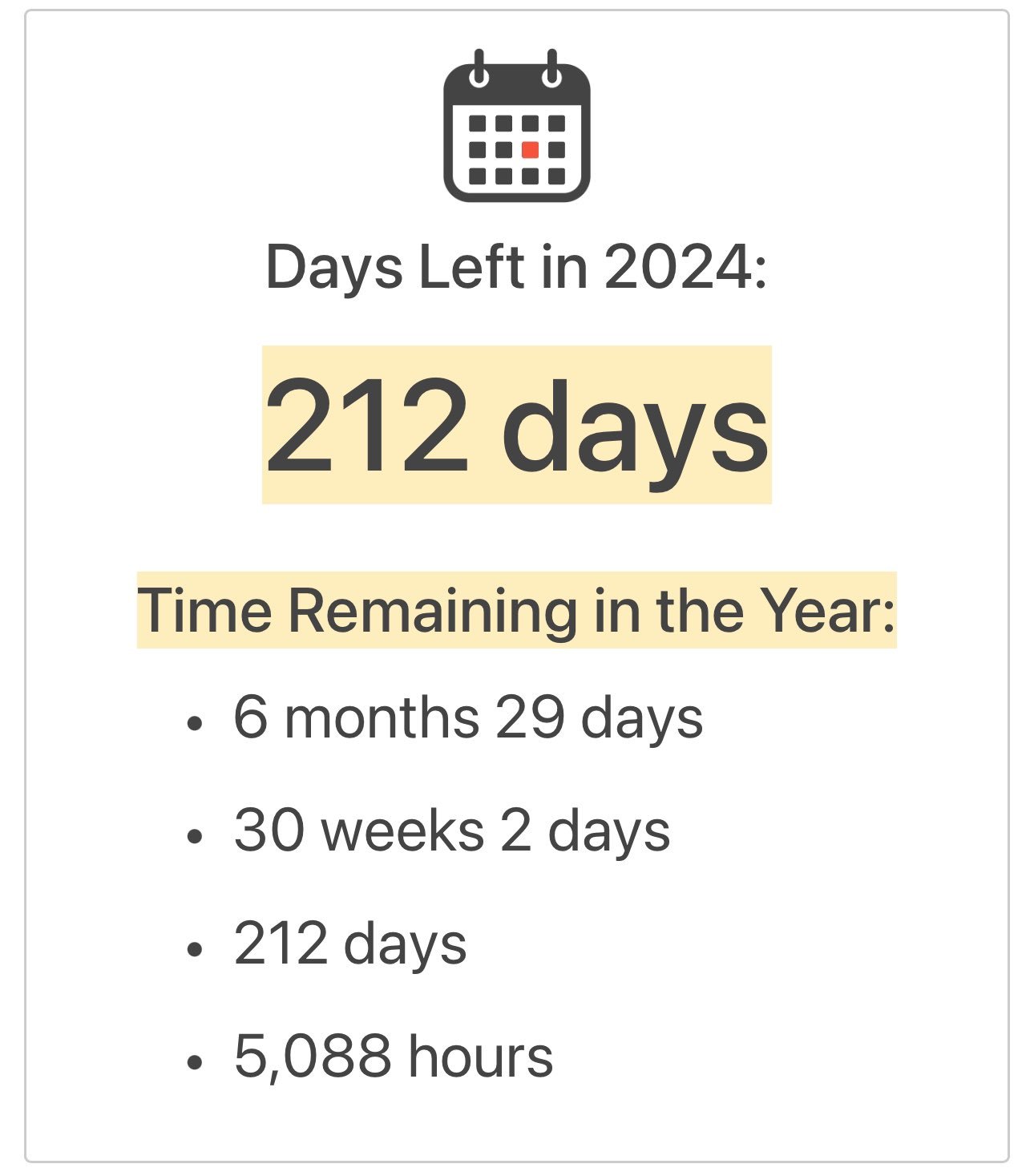
How Many Months Is 212 Days: Everything You Need To Know
212 days is equivalent to approximately 7 months. Have you ever wondered how long 212 days actually translates into months? Understanding this conversion can provide clarity when planning long-term goals or events based on a monthly timeline. Knowing the answer to the question “how many months is 212 days” can help you manage your time effectively and stay organized in your tasks and projects. Let’s delve deeper into the conversion of days to months and explore the significance of this calculation in everyday life.
Understanding How Many Months is 212 Days
Have you ever wondered how many months are in 212 days? It might sound like a tricky question, but with a little bit of math and some fun facts, we can unravel the mystery together!
Breaking Down the Days into Months
Let’s start by looking at how we can convert days into months. A month can have varying numbers of days, with some months having 30 days, while others have 31. February is a bit different, as it typically has 28 days, except in leap years when it has 29 days. To figure out how many months 212 days is, we need to consider the differences in days each month.
Understanding the Average Number of Days in a Month
To make things simpler, we can start by looking at the average number of days in a month. If we take into account the varying days in a month, the average comes out to around 30.4 days per month. This average helps us estimate the number of months in a given number of days more accurately.
Calculating the Months in 212 Days
Now that we have an idea of the average days in a month, let’s calculate how many months are in 212 days. To do this, we can divide the total number of days by the average days in a month.
212 days ÷ 30.4 (average days in a month) ≈ 6.97 months
So, approximately, 212 days is equal to about 6.97 months. This means that 212 days is almost 7 months!
Fun Facts About Months and Days
Did you know that the ancient Romans were the first to introduce the concept of a 12-month calendar? They based it on the cycles of the moon, with each month roughly corresponding to a lunar cycle. This is why some months have 30 or 31 days, mirroring the phases of the moon.
Another fascinating fact is that the word “month” comes from the word “moon.” In many ancient cultures, months were actually based on the lunar cycle, making a month roughly the time it takes for the moon to complete one full cycle of its phases.
Leap Years and February
Remember when we mentioned leap years and February having 29 days instead of 28? Leap years occur every four years to help synchronize the calendar year with the solar year. This extra day in February gives us a total of 366 days in a leap year instead of the usual 365 days.
So, if you were curious about how many months are in a leap year, it would be slightly more than in a regular year due to that extra day in February!
Real-Life Examples of 212 Days
Now that we know how many months are in 212 days, let’s explore some real-life scenarios where this timeframe might be significant. For example, 212 days could be approximately how long it takes to grow certain fruits or vegetables from seed to harvest. It could also represent the time it takes to complete a school year, with breaks and holidays included.
Thinking about time in terms of months and days helps us understand the passing of time in a more relatable way. Whether you’re counting down to a special event or just curious about time, breaking it down into months and days can make it more manageable and interesting!
So, the next time someone asks you how many months are in 212 days, you can impress them with your newfound knowledge! Remember that while days and months can be tricky to convert, a little math and some fun facts can make it all the more enjoyable to explore.
Time is a fascinating concept that we experience every day, and understanding how it breaks down into smaller units like months and days can help us appreciate its passage even more. Keep exploring and learning about time – who knows what other exciting discoveries you might make!
After 212 days it FINALLY happened!
Frequently Asked Questions
How many months is 212 days equivalent to?
212 days is approximately equal to 7 months when considering a standard month of 30 days. To calculate this, divide 212 by 30 days per month, which gives you around 7 months with a few days left over.
Can you convert 212 days into years and months?
When converting 212 days into years and months, you end up with about 7 months. To break it down further, there are roughly 0 years and 7 months in 212 days if we consider a year to be 365 days.
How many months and weeks make up 212 days?
212 days consist of approximately 7 months and 3 weeks. To find this, divide 212 by 30 days per month to get 7 months. After that, the remaining days can be divided by 7 days per week, resulting in around 3 weeks.
Final Thoughts
So, how many months is 212 days? It is approximately 7 months. Time calculations can vary based on different factors, but this estimation provides a simple way to understand the duration in terms of months. Keep in mind that months have different lengths, so the exact number may fluctuate slightly. Understanding the relationship between days and months can help in planning and organizing tasks efficiently.
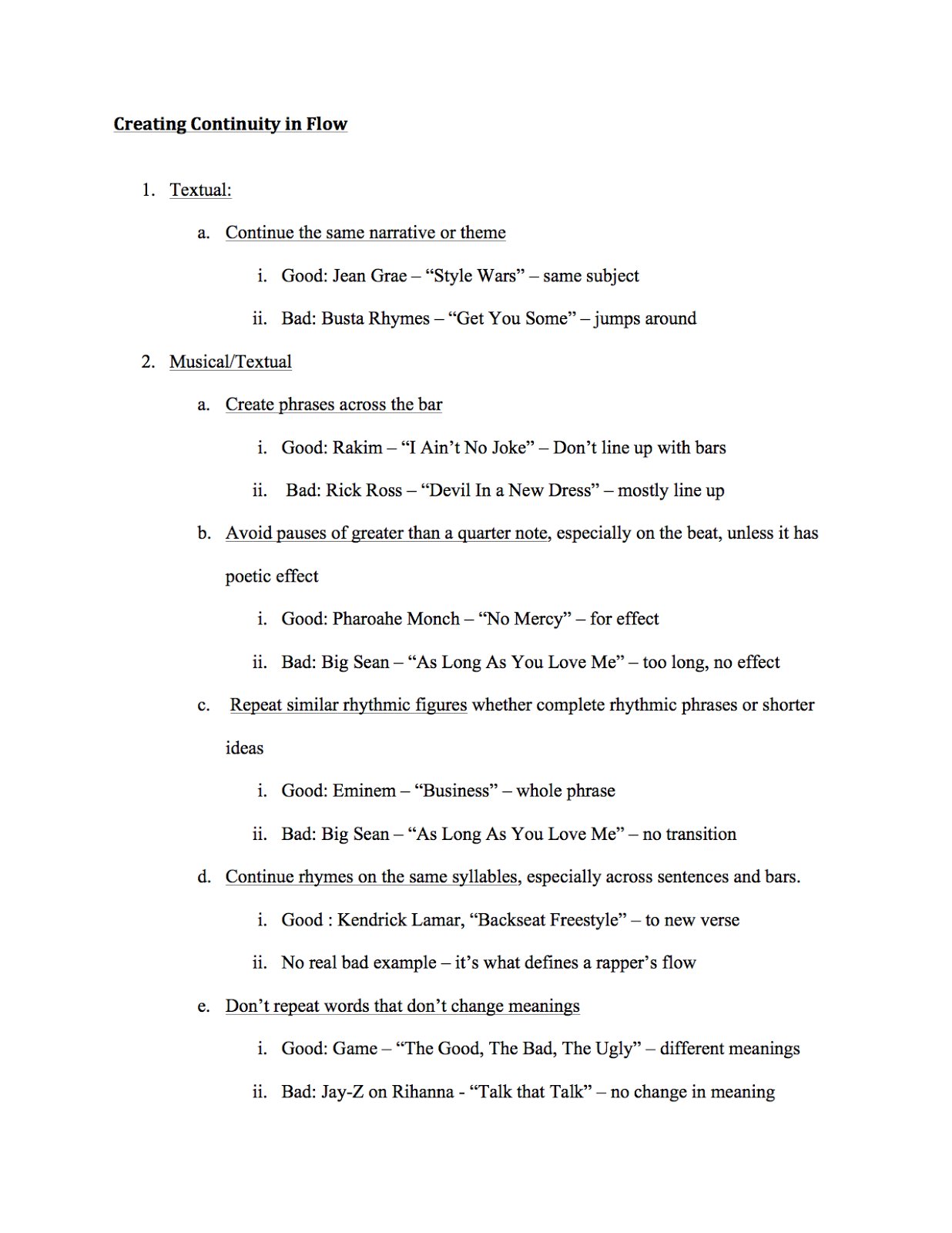
The Ultimate Guide: How To Count Bars In Rap
Counting bars in rap can be a challenge for beginners. A bar in rap typically consists of four beats, representing a fundamental unit in structuring lyrics and music. To count bars effectively, listen closely to the beat and identify when it repeats every four beats. Understanding how to count bars in rap is crucial for artists, producers, and enthusiasts to create cohesive and rhythmic verses. Let’s dive into this essential skill and master the art of counting bars in rap!
How to Count Bars in Rap: A Comprehensive Guide for Beginners
Welcome to our detailed guide on how to count bars in rap music. If you’ve ever found yourself nodding your head to a rap song and wondering how rappers keep their flow so smooth, you’ve come to the right place. Bars are the building blocks of rap lyrics, and understanding how to count them can help you appreciate the artistry behind your favorite rap songs. In this article, we’ll break down what bars are, why they matter, and most importantly, how you can count them like a pro. So, grab your notebook and let’s dive in!
What Are Bars in Rap Music?
Before we get into the nitty-gritty of counting bars, let’s first understand what bars actually are. In music, a bar (also known as a measure) is a unit of time that organizes the beats of a song. In rap music, a bar typically consists of a specific number of beats, with each beat representing a specific moment in the music where you could tap your foot or clap your hands. Bars create a rhythmic structure that rappers use to craft their lyrics and flow.
Think of bars as the musical framework that rappers use to deliver their rhymes. Just like a painter uses a canvas to create a masterpiece, a rapper uses bars to create lyrical magic. Understanding bars is essential if you want to appreciate the intricacies of rap music and gain a deeper insight into how rappers construct their verses.
Why Counting Bars Matters
Counting bars in rap music is like deciphering a secret code that unlocks the rhythm and flow of a song. By learning how to count bars, you can develop a keen ear for music and better appreciate the skill and artistry that goes into crafting rap lyrics. Whether you’re an aspiring rapper looking to improve your own skills or simply a fan who wants to delve deeper into the world of hip-hop, mastering the art of counting bars is a valuable skill to have.
When you can count bars in a rap song, you’ll be able to anticipate changes in the music, understand the structure of the verses, and even predict where the beat will drop next. It’s like having a superpower that lets you connect more deeply with the music and pick up on nuances that others might miss. So, if you’re ready to level up your rap game, let’s learn how to count bars!
How to Count Bars in Rap
Now that you know why counting bars is important, let’s get into the practical steps of how to actually count bars in rap music. Don’t worry if you’re not musically inclined – anyone can learn how to count bars with a bit of practice and patience. Here’s a step-by-step guide to help you master the art of counting bars:
Step 1: Listen for the Beat
The first step in counting bars is to listen for the beat of the song. The beat is the underlying pulse that drives the music forward, and it’s what you’ll use as a reference point to count bars. Pay attention to the rhythm of the instrumental – you’ll notice that certain sounds repeat at regular intervals. Try tapping your foot or nodding your head to the beat to help you stay in time.
Step 2: Identify the Pattern
Once you’ve tuned into the beat, listen for a recurring pattern in the music. In rap songs, beats are often structured in groups of four, with each group representing a bar. This means that you’ll typically hear a pattern repeat every four beats. By identifying this pattern, you’ll be able to start counting bars more accurately.
Step 3: Count Out Loud
As the instrumental plays, start counting out loud to the beat. Say “one, two, three, four” at each interval to mark the end of a bar. When you reach the fourth beat, you’ve completed one bar. Keep counting in groups of four until you’ve gone through the entire song. Don’t worry if you lose track at first – counting out loud can help you stay on course.
Step 4: Practice, Practice, Practice
Like any skill, counting bars takes practice. The more you listen to rap music and actively count bars, the easier it will become. Challenge yourself by counting bars in different songs and genres to strengthen your rhythmic skills. With time and dedication, you’ll be able to count bars like a seasoned pro.
Common Mistakes to Avoid
As you embark on your journey to master the art of counting bars in rap music, it’s important to be aware of common mistakes that beginners often make. Here are some pitfalls to watch out for:
Mistake 1: Focusing Only on the Lyrics
While the lyrics are a crucial part of rap music, counting bars requires you to pay attention to the underlying beat and rhythm of the song. Don’t get too caught up in deciphering the words – instead, focus on the musical structure of the track.
Mistake 2: Losing Track of the Beat
It’s easy to get carried away by the flow of a rap song and lose track of the beat. Remember that the beat is your guide for counting bars, so stay tuned in to the rhythm to avoid getting off course.
Mistake 3: Overthinking It
Counting bars should be a fun and engaging exercise, not a stressful task. Don’t overthink it – let the music guide you and enjoy the process of unraveling the rhythmic patterns within each song.
Congratulations on making it through our guide on how to count bars in rap music! We hope you’ve gained valuable insights into the importance of bars in rap, how to count them effectively, and common mistakes to avoid along the way. Remember, mastering the art of counting bars is a skill that takes time to develop, so don’t be discouraged if you don’t get it right away.
Keep practicing, keep listening to rap music with a critical ear, and most importantly, have fun with it! The world of rap is rich with creativity and rhythm, and by learning how to count bars, you’re unlocking a new layer of appreciation for the genre. So, put your newfound knowledge to the test, crank up your favorite rap song, and start counting bars like a pro!
Happy rapping!
How To Count and Write 16 Bars in Rap
Frequently Asked Questions
How can I accurately count bars in rap music?
To accurately count bars in rap music, focus on identifying the recurring pattern of beats in the instrumental. Bars typically consist of 4 beats each, so listen closely to the rhythm and note when the pattern repeats. Pay attention to the music’s structure and where the verses or chorus start and end, as this can help you determine the length of each bar.
What tools can help me count bars in rap songs effectively?
Utilize tools like a metronome or beat counter to assist you in counting bars in rap songs. These tools provide a steady beat that can help you stay on track and accurately count the number of bars. Additionally, consider using software that visually displays the waveform of the song, making it easier to identify the start and end of each bar.
Are there any tips for beginners to improve their ability to count bars in rap music?
For beginners looking to improve their ability to count bars in rap music, practice is key. Start by listening to rap songs with a clear, consistent beat and try to count along with the music. Focus on distinguishing the different sections of the song and identifying when a new bar begins. Over time, your ear will become more attuned to the structure and rhythm of rap music, making it easier to count bars accurately.
Final Thoughts
To count bars in rap, simply listen for the repeated pattern of the beat. Each group of 4 beats generally equals one bar. Pay attention to where the rhymes start and end to help you stay on track. Remember, practice makes perfect when it comes to mastering how to count bars in rap.

Calculating How Many Hours Is 109 Minutes
109 minutes is equivalent to 1 hour and 49 minutes. Understanding the conversion from minutes to hours can be beneficial in various situations, from calculating time for tasks to managing schedules effectively. By knowing how many hours is 109 minutes, you can easily plan your day with precision. Let’s delve deeper into the concept of time conversion and explore the significance of this calculation in daily life.
How Many Hours is 109 Minutes: A Detailed Exploration
Understanding Time Measurement
Time is a fascinating concept that helps us organize our days and keep track of activities. We measure time in various units, such as seconds, minutes, hours, days, and more. In this article, we will focus on converting minutes to hours and specifically delve into the question: how many hours is 109 minutes?
Converting Minutes to Hours
To understand how many hours 109 minutes represent, we first need to know the relationship between minutes and hours. One hour consists of 60 minutes. Therefore, to convert minutes to hours, we divide the number of minutes by 60. Let’s apply this conversion method to find out how many hours are in 109 minutes.
Calculating 109 Minutes in Hours
To determine how many hours 109 minutes equate to, we divide 109 by 60:
109 minutes ÷ 60 = 1 hour and 49 minutes
Therefore, 109 minutes is equivalent to 1 hour and 49 minutes. This means that 109 minutes is a little less than 2 hours.
Understanding the Concept with Examples
Let’s break it down further with a simpler example. Imagine you have a piece of music that is 30 minutes long. If you were to listen to this music three times in a row, you would have spent a total of 90 minutes listening to it. To find out how many hours this is, you divide 90 by 60:
90 minutes ÷ 60 = 1 hour and 30 minutes
This calculation shows that listening to a 30-minute music piece three times amounts to 1 hour and 30 minutes.
Real-World Applications
Understanding how to convert minutes to hours can be beneficial in various real-world scenarios. For instance, if you are planning a movie night and want to schedule movies back-to-back, knowing how many hours each movie lasts can help you plan your evening effectively.
Similarly, in sports, coaches often need to keep track of players’ training schedules, which may involve specifying training sessions in hours and minutes. Being able to convert minutes to hours allows them to allocate time efficiently and maximize training benefits.
In conclusion, 109 minutes is equivalent to 1 hour and 49 minutes. By mastering the art of converting minutes to hours, you can streamline your daily tasks, manage your time effectively, and enhance your overall productivity. Remember, time is a precious resource, so making the most of it is key to achieving your goals. Next time you come across the question “how many hours is x minutes,” you’ll be ready to crack the code!
Continue exploring the fascinating world of time measurement and unraveling its mysteries one minute at a time! Time truly does fly, but with a bit of math, you can stay on track and make the most of every hour, minute, and second.
Enjoy your time adventures!
What happens when 99 minutes and 59 seconds are exceeded on stopwatch? #shorts
Frequently Asked Questions
How many hours is 109 minutes?
To convert 109 minutes to hours, you divide the number of minutes by 60 since there are 60 minutes in an hour. So, 109 minutes is equal to 1 hour and 49 minutes.
Can you explain how to convert 109 minutes to hours?
To convert 109 minutes to hours, you divide 109 by 60 because there are 60 minutes in an hour. After the division, you get 1 hour and 49 minutes as the result.
What is the equivalent time in hours for 109 minutes?
Converting 109 minutes to hours gives you 1 hour and 49 minutes. It’s important to remember that there are 60 minutes in an hour when doing this conversion.
Final Thoughts
In summary, 109 minutes is equal to 1 hour and 49 minutes. To convert 109 minutes into hours, divide by 60 since there are 60 minutes in an hour. This calculation gives us 1 hour with a remainder of 49 minutes. Therefore, 109 minutes is equivalent to 1 hour and 49 minutes. Remember, it’s crucial to understand these conversions for accurate timekeeping.

Exploring How Many Times The Word Joy Appears In The Bible
The word “joy” appears over 150 times in the Bible, embodying a profound sense of gladness and celebration throughout the text. It serves as a beacon of hope and a reminder of the joy found in faith. As we delve into the significance of this powerful word in the scriptures, we uncover layers of inspiration and encouragement that resonate with our souls. Join us on a journey through the pages of the Bible as we explore the abundant presence of joy and its transformative impact on our lives.
Exploring the Frequency of the Word ‘Joy’ in the Bible
Introduction
Have you ever wondered how many times the word ‘joy’ appears in the Bible? The concept of joy is central to many religions, including Christianity. In the Bible, joy represents a deep sense of happiness, contentment, and celebration. Join me on a fascinating journey as we uncover just how often the word ‘joy’ graces the pages of this ancient and revered text.
What Does ‘Joy’ Mean in the Bible?
Before we dive into the numbers, let’s first understand what ‘joy’ signifies in the context of the Bible. In the Bible, joy goes beyond mere happiness; it is a profound sense of inner contentment and peace that comes from a spiritual source. Joy is often associated with gratitude, worship, and faith in God. It is a powerful emotion that can uplift the spirit and bring hope in times of trouble.
How Many Times Does the Word ‘Joy’ Appear in the Bible?
The word ‘joy’ appears numerous times throughout the Bible, especially in the Old Testament and the New Testament. In total, the word ‘joy’ is mentioned over 150 times in various translations of the Bible. This frequency highlights the importance of joy as a recurring theme in the scriptures.
Instances of ‘Joy’ in the Old Testament
In the Old Testament, the word ‘joy’ is often associated with praising God, celebrating victories, and expressing gratitude. One notable example is found in Psalm 30:5, which proclaims, “Weeping may endure for a night, but joy comes in the morning.” This verse illustrates the enduring nature of joy and how it can follow times of hardship.
Instances of ‘Joy’ in the New Testament
In the New Testament, the word ‘joy’ is closely linked to the teachings of Jesus Christ and the promise of salvation. For instance, in Luke 15:7, Jesus declares, “I say to you that likewise there will be more joy in heaven over one sinner who repents than over ninety-nine just persons who need no repentance.” This verse emphasizes the profound joy that comes from redemption and forgiveness.
The Many Forms of Joy in the Bible
Joy in the Bible takes on various forms, reflecting the diverse experiences of humanity in relation to faith and spirituality. Some common manifestations of joy in the Bible include:
1. Joy in Worship
Throughout the Bible, joy is often connected with worship and praise. In Psalm 100:2, it says, “Serve the Lord with gladness; come before His presence with singing.” This verse highlights the joy that comes from worshipping and recognizing the greatness of God.
2. Joy in Salvation
Another prevalent theme is the joy that comes from experiencing salvation and redemption. In Isaiah 61:10, it states, “I will greatly rejoice in the Lord; my soul shall be joyful in my God, for He has clothed me with the garments of salvation.” This verse expresses the uncontainable joy that stems from being saved by God.
3. Joy in Fellowship
The Bible also emphasizes the importance of finding joy in fellowship with others. In Philippians 1:4, the Apostle Paul writes, “I thank my God upon every remembrance of you.” This passage highlights the joy that comes from sharing life with fellow believers and building community.
The Significance of Joy in the Christian Faith
In Christianity, joy is considered a fruit of the Holy Spirit, a gift that believers receive through their relationship with God. Joy is seen as a source of strength, a beacon of hope, and a reflection of God’s love for His people. By cultivating joy in their lives, Christians can experience a deeper connection to their faith and a greater sense of peace and fulfillment.
In conclusion, the word ‘joy’ appears over 150 times in the Bible, underscoring its significance as a central theme in the scriptures. Joy is presented in various contexts, from worship and salvation to fellowship and gratitude. As believers engage with the word of God and embrace the message of joy it conveys, they can find comfort, inspiration, and renewed faith in their spiritual journey. So, let us remember the profound impact of joy in the Bible and strive to cultivate this powerful emotion in our own lives.
Bible Verses On Joy | Blessed Scripture Passages About Joy Of The Lord
Frequently Asked Questions
How frequently does the word “joy” appear in the Bible?
In the Bible, the word “joy” appears approximately 165 times across different translations. It is often used to describe feelings of gladness, happiness, and rejoicing throughout various passages.
Where can I find references to the word “joy” in the Bible?
You can find mentions of the word “joy” in both the Old and New Testaments of the Bible. It is commonly associated with praising God, celebrating victories, and experiencing inner peace.
What are some biblical contexts in which the word “joy” is used?
The word “joy” in the Bible is often linked to themes of salvation, worship, and thanksgiving. It is frequently mentioned in Psalms, Proverbs, and the writings of the apostles as a testament to the believers’ delight in God’s goodness.
Why is the concept of “joy” significant in the biblical context?
In the Bible, “joy” is considered a fruit of the Spirit and a manifestation of faith. It symbolizes a deep sense of contentment and fulfillment that comes from a relationship with God, serving as a source of strength and resilience in times of trials.
Final Thoughts
The word “joy” appears over 150 times in the Bible, emphasizing its significance in the scriptures. Joy is portrayed as a source of strength and a fruit of the Spirit. Understanding how many times joy is mentioned in the Bible can inspire believers to seek and cultivate joy in their lives. Joy serves as a constant reminder of God’s presence and promises throughout the pages of the Bible.

Determining How Many Years Is 4166 Days
4166 days equate to approximately 11.4 years. Converting days into years can often be a puzzling task, but worry not! Understanding the measurement of time in different units is key. Let’s delve into the conversion process of how many years is 4166 days. Time is a fascinating dimension we navigate daily, and knowing how to interpret it is both enlightening and practical. Join us on this journey of deciphering the relationship between days and years.
Understanding Time: Exploring How Many Years 4166 Days Equal
How Many Years is 4166 Days?
Have you ever wondered about the relationship between days and years? Let’s dive in and explore how many years exactly are in 4166 days.
Breaking Down the Numbers
To understand how many years are in 4166 days, we need to break it down into manageable parts. Let’s start by looking at how many days are in a year.
On average, a year consists of 365 days. However, every four years, we have a leap year with 366 days. This additional day helps keep our calendar aligned with the Earth’s revolutions around the sun.
Calculating Years from Days
Now, let’s do some math to find out how many years 4166 days equal. We can begin by dividing the total number of days by the average number of days in a year:
4166 days ÷ 365 days/year = 11.41 years
So, 4166 days are approximately equal to 11 years and 4 months. It’s fascinating to see how a simple calculation can convert days into years!
Real-World Applications
Understanding the relationship between days and years can have practical applications in various fields. For instance, in history, knowing how to convert days into years can help us accurately interpret timelines and historical events.
In science, converting days into years is crucial for calculating the age of celestial bodies or studying the growth of living organisms over extended periods.
Conclusion
In conclusion, we’ve discovered that 4166 days are equivalent to approximately 11 years and 4 months. This exercise highlights the interconnectedness of time and the importance of understanding how different units of time relate to each other.
Next time you come across a large number of days, try converting it into years using the simple formula we discussed. It’s a fun way to explore the concept of time and appreciate the significance of each passing moment.
Longest Video on YouTube 10,000,000 Hours but it’s 9 seconds
Frequently Asked Questions
How many years is 4166 days?
4166 days is equivalent to approximately 11 years and 5 months. To calculate this, you can divide the total number of days by 365 days (the average number of days in a year). This gives you the number of years, and the remaining days will give you the additional months.
Can you convert 4166 days into years?
Yes, 4166 days equals about 11 years and 5 months. By dividing the total number of days by 365 days (the average length of a year), you can determine the equivalent in years and months.
What is the equivalent number of years for 4166 days?
The total of 4166 days can be converted to approximately 11 years and 5 months. This calculation involves dividing the total days by the average number of days in a year (365) to get the years and months.
Final Thoughts
In conclusion, 4166 days is equivalent to approximately 11 years and 4 months. This time frame spans over a significant period, providing ample opportunity for growth and change. Understanding how many years 4166 days represents allows for better perspective on the passing of time and the importance of making the most out of each day. Time is a valuable resource, and it is essential to make the most of every moment.


